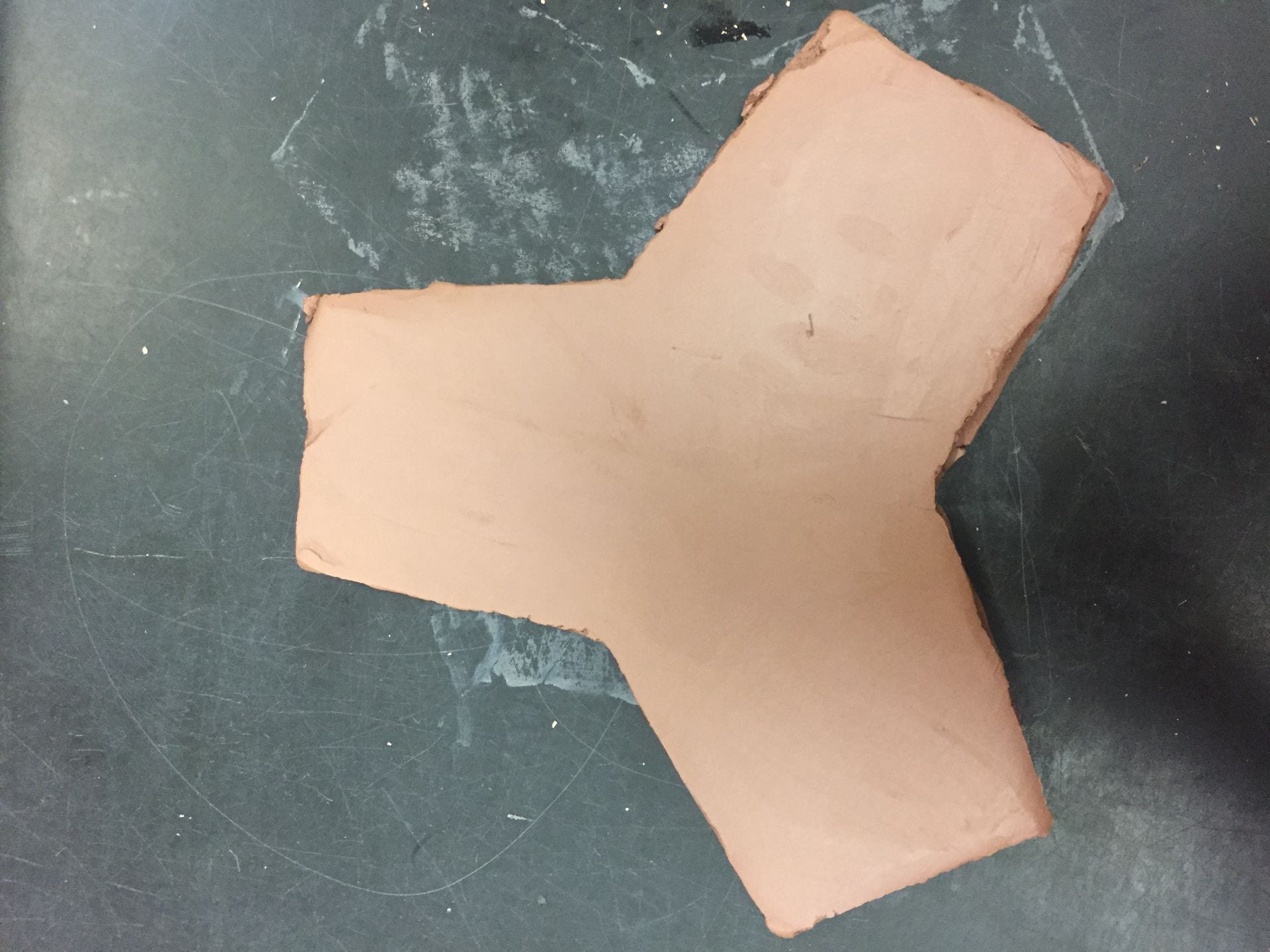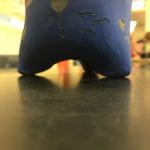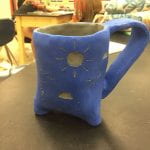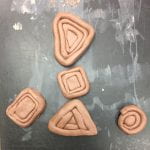It’s Slab Folding Time
In class we learned two similar techniques: origami vessels and soft slab construction using Liz Zlot Summerfield’s technique. The Liz Zlot vessel was formed through soft slab construction. First, I needed a template. Initially, we used a generic square template to learn the process, before making our own templates.

template with equilateral triangle base and sides of equal length

cutout of template on a thin moist slab
I decided to create a template with an equilateral triangle base instead of square. Then, I made and smoothed a slab of very soft clay and cut the shape out of the template before beveling the edges. The sides were then gently

vessel after sides are folded up

lid
folded up till they met where they were pressed together (no scoring because clay was very soft) and the process lines were left to add to the piece. When I created my piece, the sides were at uneven angles and causes the top of the vessel to form an isosceles triangle instead of the intended equilateral one. After I had the basic form of my piece, I created a lid for it. On the lid I added an applique triangle, to form a unique handle to grab it by. This led me to decide to embellish the rest of the piece with basic geometric shapes. I did a different shape on each side: circles on one, squares on another, and triangles on the last.


The other new technique we learned was using clay like origami. Similarly to Liz Zlot’s technique, a template is created and cut out of a thin soft slab. I used a rectangle template and cut right angles strips on to the side of the template attempting to mimic what the video appeared to show. However, instead of right angles, the video actually had slightly diagonal cuts on the template. Then, the sides are folded up overlapping each other (they can be on top of or under) to create a vessel. I folded my sides on top of each other using ample scoring and slip to make solid connections, but due to the basic angles I used, the vessel lacked the flare seen in other pieces. If I recreated the piece, I would not use right angles and would experiment with the way and amount of folds. For example, I may fold opposing sides rather than all 4 and use a template that flares towards or away from the edge instead of parallel to.
(Images of third side of Liz Zlot form and origami piece corrupted and lost, will retake)






 When applying glue to my piece, I used a clear glue that was very liquid and not very exact, resulting in a very messy outline.
When applying glue to my piece, I used a clear glue that was very liquid and not very exact, resulting in a very messy outline.

